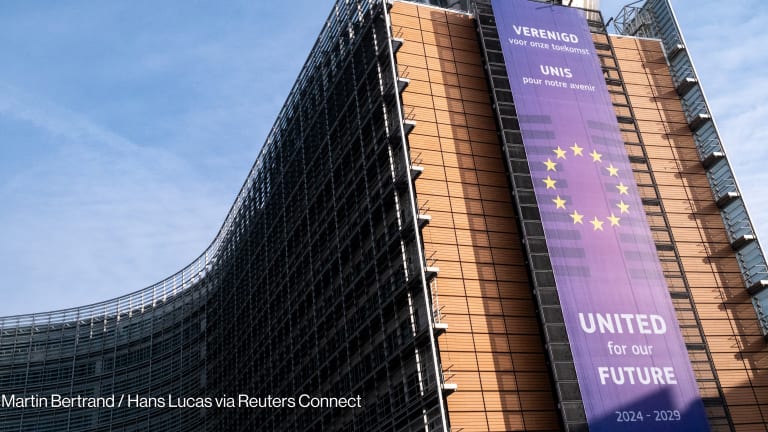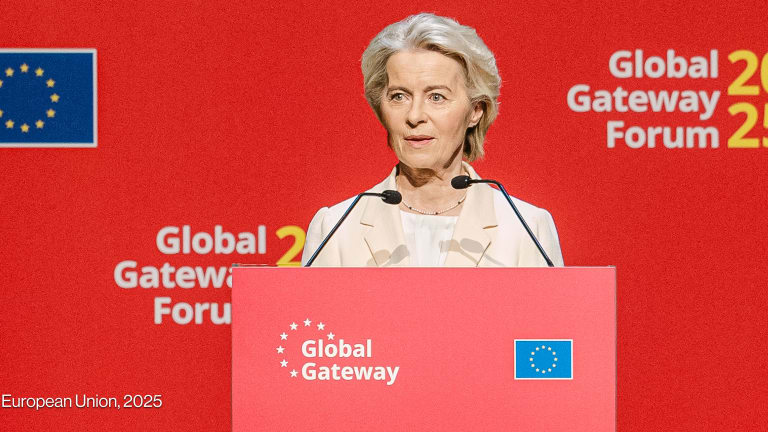
BRUSSELS — The European Commission is yet to publish a favorable evaluation of the European Investment Bank’s external lending mandate, obtained by Devex, as the pair vie to oversee the European Union’s development policy.
EU institutions cross swords over future of development finance
The European Commission and European Investment Bank are battling it out for control.
The mostly positive report, produced for the commission and dated July 2018, comes at an awkward time. Under the EU’s 2021-2027 budget, currently being negotiated, both institutions want more control over the use of taxpayer-backed guarantees to promote investment in developing countries.
The commission has proposed incorporating the external lending mandate, or ELM, and the Africa, Caribbean and Pacific Investment Facility, both currently overseen by EIB, into a single guarantee platform run by the commission. This would house a souped-up version of its own fledgling European Fund for Sustainable Development.
The commission argues this would create more coherence and allow it to better steer investments in favor of sustainable development. But EIB told EU member states at a meeting in July that the EFSD “which has not yet supported any investment and is unlikely to achieve significant leverage ... makes sense as niche product — not as a model for the EC’s investment framework.”
EIB has its own plans for an EU development platform, and wants to keep control of the ELM and ACP Investment Facility, which its president Werner Hoyer recently told Devex represent “the most effective instruments that the European Union has on the financial side vis-a-vis developing countries.”
The consultants who authored the evaluation for the commission found ELM operations are in line overall with EU policy objectives and “contribute to the EU Global Strategy priorities in terms of state and societal resilience and the European Neighbourhood Policy objectives.”
The current ELM has a ceiling of €32.3 billion ($37.14 billion) covering financial operations signed between 2014-2020 in around 60 countries and territories. Projects must support the local private sector, especially small and medium enterprises; social and economic infrastructure; climate change mitigation and adaptation, although the evaluation found more attention must be paid to the latter; and, since March, “the long-term economic resilience of refugees, migrants, host and transit communities, and communities of origin.”
“The ELM and its high-level objectives continue to be relevant to the changing geopolitical context and strategic objectives at global and EU level,” the consultants found. “Furthermore, the ELM operations are overall effective in contributing to their achievement.”
They added that the ELM complements other EU external lending tools, such as the ACP Investment Facility which focuses on other regions, and the commission-run EFSD which is intended to target riskier investments.
Xavier Sol, director of Counter Balance, an NGO that has criticized the EIB for not doing enough to tackle climate change, human rights abuses, and tax havens, took part in a stakeholder consultation for the evaluation but had not seen the final report. He said the presence of half-a-dozen EIB staff during the consultation, plus their attendance at interviews with borrowers who benefit from the ELM, suggested EIB “were trying to control the process.” Still, as an EIB official pointed out, the consultation process was organized by the commission.
Sol also pointed to “shortcomings,” mentioned in the evaluation, with the official channels the EIB uses to communicate its work to the commission. Overall though, he said, “it’s rather a positive assessment,” adding that the commission was likely slow to publish it “because it doesn’t go in their direction of getting more control of the EIB.”
An EIB official, who cannot be named in line with bank rules, told Devex that the ELM mandate is “jointly crafted by co-legislators” and “it is then up to EIB to translate the political mandate into concrete partnerships, investments, and lasting EU impact on the ground. Such division of labor between European institutions is crucial and the independent evaluation confirms that the EU bank has played its part in effectively achieving the objectives set by EU policymakers.”
The official said it was “somewhat puzzling” that the commission did not propose continuing with this “effective flagship instrument” as part of its proposal under the next long-term budget.
“Without the ELM, the EU bank would have to cease all its external operations,” the official said. “Such a reduction of EU investment outside the EU would negatively impact the union’s contribution to [official development assistance], and undermine the EU’s political leverage abroad.” The EIB accounts for 32 percent of ODA reported by the EU institutions, the bank said in a briefing note for the July meeting with member states.
A commission official, authorized to speak to the media anonymously under commission rules, responded that it has “has no intention to discontinue the substance of the ELM in the [2021-2027 budget]. To the contrary, we do believe it’s delivering positive results generally. Continuing the substance of the ELM, however, does not mean having a separate instrument — just as having a dedicated neighborhood policy does not mean having a separate instrument for this policy.”
A commission spokesperson told Devex: “The commission is required to submit a report to the European Parliament and the Council evaluating the application of ELM by June 2019 … The [consultants'] report is one element of the Staff Working Paper of the overall evaluation. The commission will publish the Staff Working Paper, and the relevant elements, once it is presented to the European Parliament and the Council.”
Update, Oct. 8: This story was updated to include a response from the European Commission provided after publication.








